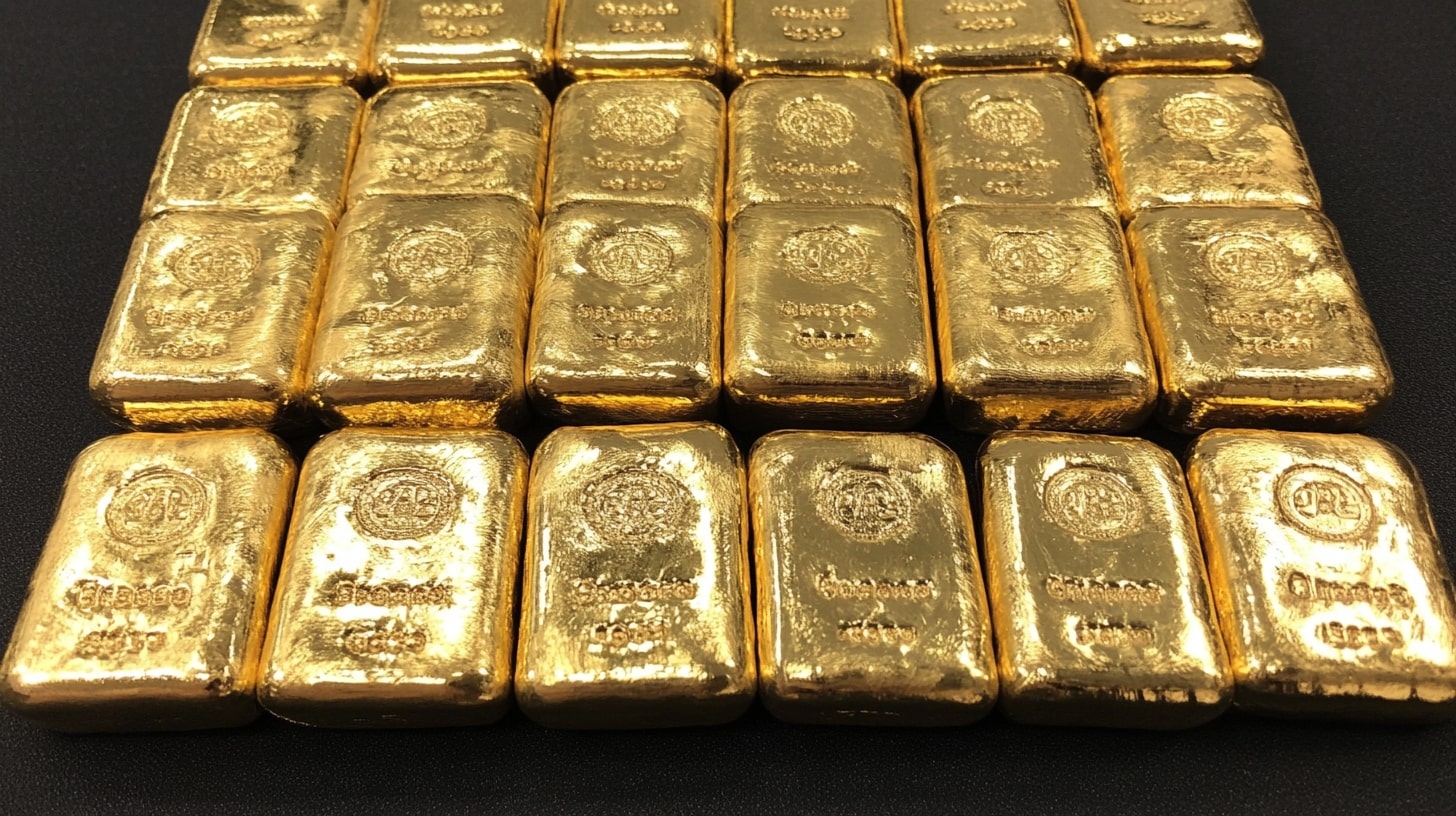
Gold Shines Bright at $2,635- Geopolitical Tensions and Fed Policies Drive Demand
Global uncertainties, a weaker dollar, and inflation fears set the stage for gold's march toward $3,000, with central banks and investors rallying behind the precious metal | That's TradingNEWS
Gold Prices Soar Amid Geopolitical Tensions and Market Volatility
The gold market is once again capturing attention as prices climb for the second consecutive session, reaching a high of $2,635. This surge comes amid heightened geopolitical tensions, particularly Russia’s nuclear policy revisions and escalations in the Ukraine war, alongside shifting Federal Reserve policy expectations. Gold’s safe-haven appeal remains undiminished, reinforced by a weakening U.S. dollar and soaring demand from central banks.
Heightened Geopolitical Risks Drive Gold to New Heights
As the global stage grows increasingly unstable, gold's safe-haven allure is shining brightly. The Russian Federation’s revision of its nuclear doctrine, coupled with escalating conflicts in the Middle East and Ukraine, has rattled investors. President Vladimir Putin’s nuclear policy updates have introduced fresh uncertainties, as have U.S.-supplied long-range missiles now being used by Ukraine against Russian targets.
The possibility of a third world war, as hinted at by Russian officials, has led to a rush toward gold as a secure asset. Historical trends underscore that during such periods of geopolitical instability, gold often becomes a preferred asset for preserving value.
Federal Reserve Policies Keep Markets Guessing
The Federal Reserve’s next moves remain a critical factor for gold prices. President-elect Donald Trump's proposed policies, including increased tariffs and tax cuts, are expected to fuel inflation, potentially complicating the Fed's ability to implement aggressive rate cuts. Fed Chair Jerome Powell has been notably cautious in addressing how these fiscal changes might impact monetary policy.
Market participants are now split, with some expecting a 25-basis-point rate cut in December, while others anticipate a pause to assess inflationary pressures. Goldman Sachs analysts remain bullish, forecasting gold prices to reach $3,000 by 2025, supported by central bank demand and anticipated rate reductions.
Technical Outlook: Gold Battles Key Resistance Levels
Gold prices have staged a robust recovery, rising nearly 38% from their November lows. The current resistance zone lies between $2,634 and $2,650, marked by the 50-day Exponential Moving Average (EMA). A sustained breakout above these levels could pave the way toward the $2,700 mark, with further upside targeting $2,800.
The 14-day Relative Strength Index (RSI) has rebounded above 40, signaling a shift from bearish momentum. However, should prices dip below $2,600, gold may retest support levels at $2,550 or even $2,500, where the 100-day EMA provides strong technical backing.
Central Banks and Institutional Demand Bolster Long-Term Outlook
Goldman Sachs has reaffirmed its bullish stance, projecting $3,000 per ounce by 2025, driven by structural and cyclical factors. Central banks continue to amass gold reserves at record levels, viewing it as a hedge against fiat currency devaluation. The World Gold Council reports that global central bank purchases have surged 30% year-on-year, further reinforcing gold’s demand fundamentals.
Moreover, institutional investors, spurred by geopolitical uncertainties and a weakening dollar, have ramped up their allocations. Recent data shows a significant uptick in gold-backed ETF inflows, reflecting growing confidence in the yellow metal’s long-term potential.
Market Drivers: Weak Dollar and Inflationary Fears
The U.S. dollar, which recently touched a one-year high, has pulled back amid profit-taking and easing Treasury yields. This decline has made gold more attractive to non-dollar investors, adding momentum to its rally.
Additionally, Trump’s proposed tariffs and fiscal policies are expected to stoke inflation, creating a favorable backdrop for gold. The metal, which traditionally thrives in inflationary environments, could see sustained demand as markets adjust to the new policy landscape.
Gold’s Resurgence: A Buy-on-Dip Opportunity?
Despite recent volatility, many analysts view current gold prices as an attractive entry point. Saxo Bank’s Ole Hansen highlights that the selling pressure has eased, opening the door for renewed buying interest. Similarly, RJO Futures’ Daniel Pavilonis sees gold technically poised to revisit the $2,700 level, with potential to extend gains toward $2,800.
Geopolitical risks and uncertain monetary policies make gold a compelling choice for investors seeking a safe haven. As central banks continue to accumulate reserves and institutional demand strengthens, gold's bullish narrative appears intact.
Conclusion
Gold’s current trajectory, fueled by geopolitical tensions, inflationary fears, and central bank demand, highlights its enduring appeal in volatile times. While the path to $3,000 by 2025 may encounter hurdles, the metal’s robust fundamentals make it a solid contender for long-term portfolios. Investors eyeing safe-haven assets should closely monitor gold’s technical levels, as any pullback could present a strategic buying opportunity.
















